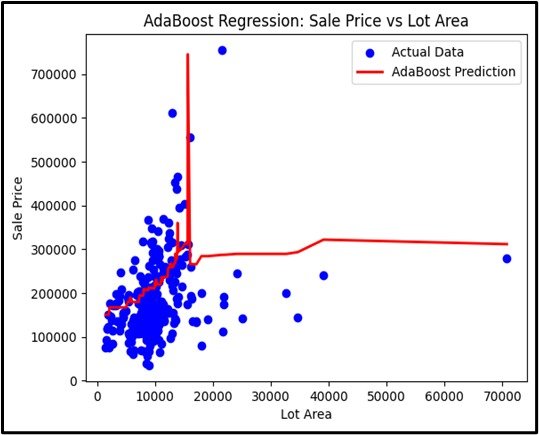Adaboost Regression
AdaBoost Regression is an ensemble learning technique that combines multiple weak learners (typically simple models) to form a strong predictive model. It works by iteratively adjusting the weights of the weak learners, giving more emphasis to the data points that were predicted incorrectly in previous iterations.

- Concept: An ensemble learning method that combines multiple weak learners (usually simple models) to create a strong predictive model. It assigns higher weights to data points predicted incorrectly by previous models, improving performance over iterations.
- Weak Learners: Combines multiple weak models, such as decision stumps, into a single, stronger model.
- Adaptive Weighting: Focuses on errors by increasing the importance of incorrectly predicted instances in each iteration.
- Applications: Used for predicting continuous variables in fields like finance, risk modeling, and sales forecasting.
Enhancing Model
Purpose: Bsically to improve the predictive performance by combining multiple weak regression models.
Input Data: Numerical or categorical variables (features).
Output: A continuous value.
Assumptions
Assumes that the data can be approximated by combining multiple weak models to correct errors of previous models iteratively.
Use Case
AdaBoost Regression is effective for improving the accuracy of weak models, especially in complex datasets with non-linear relationships. For example, predicting customer spending behavior based on demographic and transaction data.

Advantages
- Can significantly improve the accuracy of weak learners.
- Reduces bias and variance.
- Robust to overfitting when used with proper regularization.

Disadvantages
- Sensitive to noisy data and outliers.
- Requires careful tuning of parameters.
- Can be computationally intensive with large datasets.
Steps to Implement:
- Import necessary libraries: Use `numpy`, `pandas`, and `sklearn`.
- Load and preprocess data: Load the dataset, handle missing values, and prepare features and target variables.
- Split the data: Use `train_test_split` to divide the data into training and testing sets.
- Import and instantiate AdaBoostRegressor: From `sklearn.ensemble`, import and create an instance of `AdaBoostRegressor`.
- Train the model: Use the `fit` method on the training data.
- Make predictions: Use the `predict` method on the test data.
- Evaluate the model: Check model performance using evaluation metrics like R-squared or MSE.
Ready to Explore?
Check Out My GitHub Code

